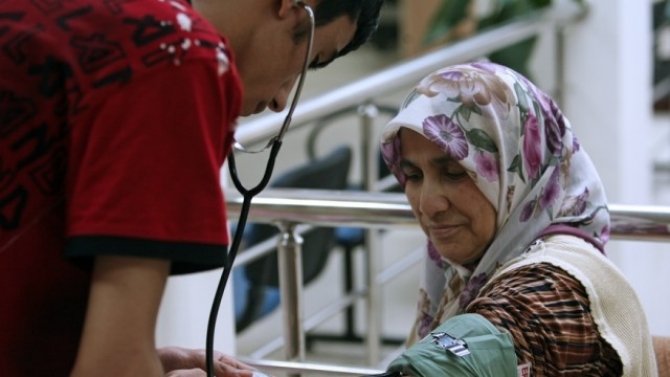« One of the most striking indicators of regional inequality is the high infant mortality rates in Turkey’s Kurdish-majority provinces, according to the latest “Inequality Bulletin” » reports Bianet English.
Addressing a different indicator of regional inequality in every bulletin, the second « Inequality Bulletin » has dealt with inequality in healthcare.
Based on the official data of the Turkish Statistical Institute (TurkStat), the bulletin has shed light on the « infant mortality rate », « life expectancy », « number of patients per physician », « rate of satisfaction with health » and « rate of public satisfaction with healthcare services ».
According to the analysis, the Kurdish-majority provinces in east and southeast Turkey, which are defined as « the Region of Inequality », are markedly different from the rest of Turkey in terms of healthcare.
The most striking indicator is the « infant mortality rate », the bulletin has shown. While the TurkStat figures showed in 2019 that the average infant mortality rate of 65 provinces was 8.3 per thousand, this rate was 11.4 percent for the 16 Kurdish-majority provinces.
The bulletin has also demonstrated that in the Southeast Anatolia region (Antep, Adıyaman, Kilis, Urfa, Diyarbakır, Mardin, Batman Şırnak and Siirt provinces), the mortality rate of children aged five and younger is higher than the other regions and provinces of Turkey.
Life expectancy and healthcare services
While the life expectancy of Turkey is 78.1 for Turkey on average, this number is 77.7 years for the « Region of Inequality ».
Throughout Turkey, the number of doctors and dentists per 10 thousand people is 19.9 on average. However, in the Kurdish-majority provinces of Turkey, this number is 15.1. In the rest of Turkey, this number is 21.1. According to the Inequality Bulletin, the « Region of Inequality » is disadvantaged by one quarter in terms of the number of physicians.
In the region analyzed by the Inequality Bulletin, the applications to physicians have been on the increase as well. The number of applications is 5,834 across Turkey on average. While this number is 6,181 for the « Region of Inequality », it is 5,749 for the rest of Turkey.
These numbers show that the physicians in the region receive 7 percent more applications, which increases their workload.
In Turkey, the number of hospital beds per 100 thousand people is 27.9 on average. While this number is 21.1 in the Kurdish-majority provinces, it is 29.6 in the rest of Turkey. Similarly, there are 2.9 pharmacies per 100 thousand people across the country on average. While this number is 1.9 in the « Region of Inequality », it is 3.2 in the other provinces of Turkey.
Provinces in the region not preferred
Drawing attention to the 2018-2019 data of the Health Ministry, the Bulletin has shown that there are striking differences among the regions in terms of healthcare services. While there is an influx to İstanbul, Ankara and İzmir from all provinces to access healthcare services and there is also an appeal to regional centers such as Adana and Antep, none of the provinces in the region is preferred by citizens for healthcare services.
Even though they are disadvantaged in terms of the number of hospitals and physicians, the people living in the region seem to be more satisfied with their health, according to the bulletin: While the average rate of satisfaction with health is 72 percent across Turkey, this rate is 73 percent in the Kurdish-majority provinces and 68 percent in the rest of the country.
However, the picture changes when it comes to the satisfaction with public healthcare services: While this rate is 77 percent on average for Turkey as a whole, it is 69 percent for the « Region of Inequality » and 80 percent for the rest of Turkey. (RT/SD)
Bianet English, February 21, 2022, Photo/Simone D. McCourtie/World Bank

